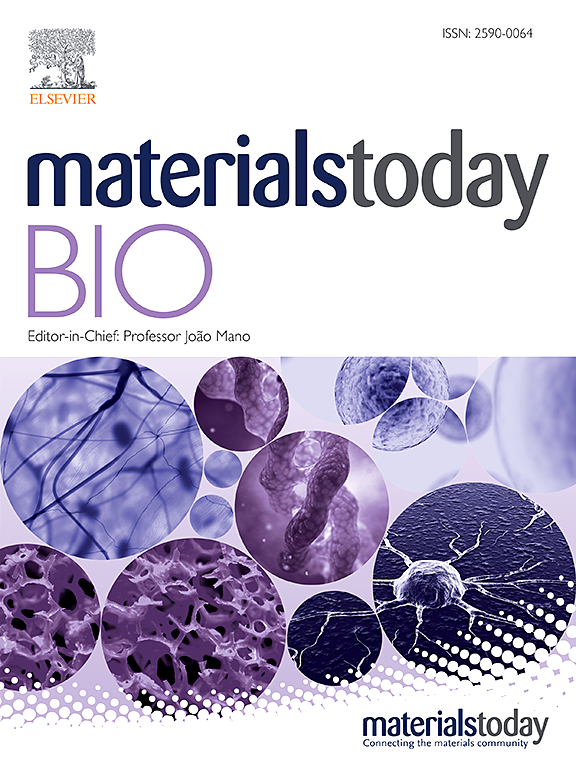Enhancing auricular reconstruction: A biomimetic scaffold with 3D-printed multiscale porous structure utilizing chondrogenic activity ink
IF 8.7
1区 医学
Q1 ENGINEERING, BIOMEDICAL
引用次数: 0
Abstract
Auricular defects are highly prevalent and have a significant impact on the physical and mental well-being of patients. However, due to the intricate anatomy of the auricle, achieving personalized and precise reconstruction poses a major challenge. Currently, tissue engineering auricle scaffolds based on rigid materials are an effective therapeutic approach for auricle reconstruction. Nevertheless, these auricular scaffolds often fail to meet biomechanical requirements and lack biological activity, resulting in suboptimal treatment outcomes. In this study, polyvinyl alcohol and gelatin were used as printing inks, and nano-silica was employed as a filler to optimize the printability of the inks. Through layer-by-layer 3D printing, auricle scaffolds were fabricated that closely mimic human auricular biomechanical properties and possess a multi-scale pore structure. Subsequent in vitro experiments confirmed the biocompatibility of the scaffolds. Furthermore, a rabbit auricular cartilage defect model was established to evaluate the therapeutic efficacy of this bionic scaffold featuring a multi-scale pore structure for auricle defects. The findings demonstrated that the developed auricle scaffold not only exhibited excellent biomechanical strength and favorable biocompatibility but also provided an advantageous environment for chondrocyte growth due to its multi-scale pore structure, thereby significantly promoting chondrocyte proliferation. Overall, the 3D printed tissue engineering bionic scaffold with a multi-scale pore structure developed in this study is anticipated to significantly enhance the therapeutic efficacy for auricle defects and offer a novel therapeutic strategy for such defects.

求助全文
约1分钟内获得全文
求助全文
来源期刊

Materials Today Bio
Multiple-
CiteScore
8.30
自引率
4.90%
发文量
303
审稿时长
30 days
期刊介绍:
Materials Today Bio is a multidisciplinary journal that specializes in the intersection between biology and materials science, chemistry, physics, engineering, and medicine. It covers various aspects such as the design and assembly of new structures, their interaction with biological systems, functionalization, bioimaging, therapies, and diagnostics in healthcare. The journal aims to showcase the most significant advancements and discoveries in this field. As part of the Materials Today family, Materials Today Bio provides rigorous peer review, quick decision-making, and high visibility for authors. It is indexed in Scopus, PubMed Central, Emerging Sources, Citation Index (ESCI), and Directory of Open Access Journals (DOAJ).
文献相关原料
公司名称
产品信息
索莱宝
Safranin O and Fast Green staining
索莱宝
Masson staining
 求助内容:
求助内容: 应助结果提醒方式:
应助结果提醒方式:


